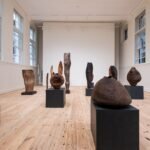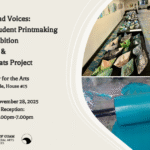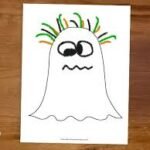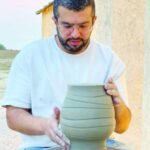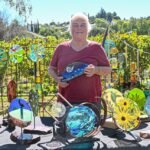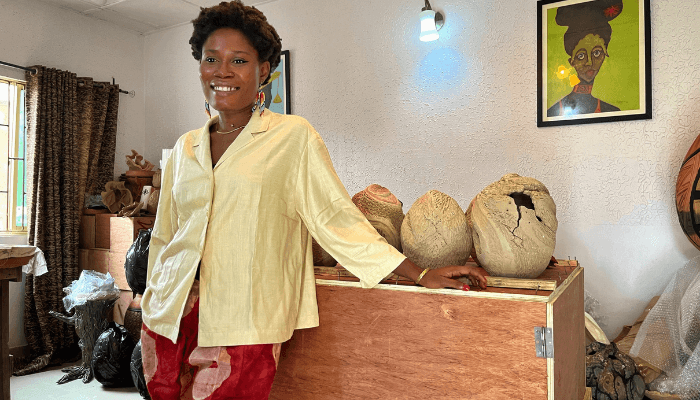
Olubunmi Atere, a sculptor and artist based in Lagos, Nigeria, is known for her work that delves into the depths of human experience and nature. With a background in conceptual and ceramic art, Atere’s creations are a blend of memory, metaphor, and materiality.
In this interview with Anthony Udugba of BusinessDay media, Atere shares her journey, inspirations, and insights into the art world, offering a glimpse into the mind of an artist who is as rooted in her locality as she is in her truth.
Background and Inspirations
Olubunmi Atere welcomes Anthony Udugba into her studio in Lagos, introducing herself as a conceptual and ceramic artist whose work is deeply influenced by nature and curiosity. “The grounding for my work tilts toward natural elements and discoveries I’ve made along the way,” she explains. A self-described adventurous and keen individual, Atere uses curiosity as an anchor in her creative process. “It’s how I’m drawn to explore things—especially the unspoken or the uncomfortable,” she says.
Her art captures experiences in nature and with people, transforming them into abstract forms that invite viewers to engage with curiosity. “I code these experiences into something that requires you to wonder,” she notes. “When you’re curious, you’re already open to what I’m saying. That openness allows you to see the unusual and act on it, creating a pathway to change.”
Atere recounts a pivotal moment of inspiration from a visit to Bruce Onobrakpeya’s gallery space in Delta State. “I was on the top floor and saw a pool of water glistening in the distance,” she recalls. “I hadn’t even unpacked my bag, but I ran downstairs into the bush to find it.” She did find the pond, and on her way back, she picked up a seed—a keepsake she still holds. This experience ties back to her upbringing, where memory was a constant companion. “My father, a choir master and educationist, would sing songs to me to remember them,” she says. “I’d sing them back to him later, like a recorder. That set the pace for my connection to memory.”
Art as a Journey of Memory, Metaphor, and Materiality
Atere’s artistic practice is a fusion of memory, metaphor, and materiality. “My work isn’t an exact replica of my experiences,” she explains. “It’s a combination of what I see and feel, expressed in abstract ways that spark curiosity.” She collaborates with her materials—primarily clay and ceramics—allowing them to dictate the pace of creation. “I let the material take its time before it goes out into the world,” she says.
This approach shines in her series Rhythm of Life, where the egg serves as a metaphor for life’s potential and actualization. One piece, Faces, reflects the step-by-step process of existence. “I use the eye as an entryway to the inner self, connected to the brain,” she describes. “Abstract carvings represent thoughts and experiences—things like vegetation, homes, and farmland from my upbringing.” These elements weave together her personal history and her bond with nature.
The Role of a Curator
When asked about her work as a curator, Atere compares it to a biological cross-section. “Think of cutting open a tomato to see what’s inside,” she says. “As an artist, you’re the tomato, full of ideas and experiences. As a curator, I see the cross-section of artists, archives, and organizations. It gives me depth and context to interpret and present art.” She views curatorial practice as vital for shaping narratives that resonate with society.
Storytelling through Art
For Atere, storytelling in art thrives on context. “Curatorial work provides a thread—connecting people, places, and archives,” she explains. “It’s not just my feelings; it’s research and collective perspectives, from history to the future we’re building.” This depth enriches her sculptures, making them both personal and universal. “It’s juicier,” she adds with a smile, “and it anchors the story.”
Rootedness in Locality
Atere’s art is deeply tied to her Lagos roots and cultural upbringing. “I grew up in a communal setting—more cultural than Westernized,” she says. “That foundation shapes my work.” Her choice of materials, like clay, reflects this heritage. “Clay carries cultural essence,” she notes. “It’s a container for my truth.” Even as her work evolves, her local identity remains steadfast, resonating with audiences both in Nigeria and abroad.
Symbolism in Her Work
One of Atere’s pieces features the Sankofa symbol, an Adinkra emblem meaning “reaching back to take knowledge from the past.” “It’s part of my rootedness,” she says. “My truth stays the same, whether locally or globally.” In Rhythm of Life: Faces, she blends symbols like the sun and tribal patterns with personal memories, creating a narrative of interconnectedness and life’s journey.
Art and Craft: Bypassing the Bias
Atere tackles the age-old debate of art versus craft with ease. “I’ve bypassed that bias intuitively,” she asserts. “The distinction comes from functionality versus art’s ability to capture more. I let technicality and intuition flow together.” Clay, she argues, transcends this divide. “It’s a lifelong material—cultural and universal. It captures both function and feeling, telling its own truth.”
Environmental Conservation and the Artist’s Role
Reflecting on her time at the Takwa Bay Residency project, Atere emphasises artists’ roles in environmental conservation. “There’s no separation between us and nature,” she says. “Conservation is essential—especially for artists who mediate reality through their work.” At Takwa Bay, she felt the area’s sacredness and history, which deepened her practice. “Seeing it firsthand lets me articulate it to others, sparking change,” she adds.
Materials and Creative Expression
Atere’s practice hinges on memory, metaphor, and materiality. Beyond clay, she incorporates unconventional materials like jutsak (sacking fabric) from Takwa Bay. “It represents exchange and transportation there,” she explains. “I pick what speaks to my message—metal, wood, whatever’s necessary.” This flexibility bridges her conceptual ideas with tangible forms, inviting wonder and recognition from viewers.
The Business of Art in Nigeria
Atere sees Nigeria’s art scene as vibrant and transformative. “It’s energetic—old school, new school, quirky, unconventional,” she describes. “Lagos embraces that diversity.” She values spaces like the Center for Contemporary Art Archives in Yaba, where she attended a workshop. “Seeing old exhibition papers took me back to the ’90s,” she says. “It grounds you in collective memory and your role today.”
Pricing and Selling Artwork
Pricing her work, Atere explains, varies by context. “There’s no fixed average,” she says. “It depends on the exhibition’s location, investment, and percentage shares.” Her experiences—like enduring harsh conditions during a Cape Town residency—add value. “I put effort into authenticity,” she notes. Exhibitions connect her with collectors and curators, amplifying her reach.
Femininity and Rebelliousness in Her Work
Atere’s art balances femininity and rebellion. “The egg form speaks to femininity—versatility, comfort,” she says, citing a piece titled Fecundity. Yet her work also confronts darker truths. “I’m intrigued by life’s muckiness—things people shy away from,” she admits. “I don’t save face. I just be, whether it’s political or vulnerable.”
Advice to Aspiring Artists
For artists seeking their voice, Atere offers heartfelt advice: “Be authentic. Do it regardless—even if you’re hiding at first.” She encourages collaboration with materials. “Sometimes the permission you need comes from them,” she says. “The art world is a choir. Sing your harmony. The balance will come later.”
Conclusion
Olubunmi Atere’s journey as an artist is a testament to the power of memory, metaphor, and materiality. Rooted in her Lagos upbringing, her work invites curiosity and openness, offering a pathway to understanding. Through her sculptures, she contributes a local harmony to the global choir of art, blending truth, nature, and rebellion into a singular voice.


